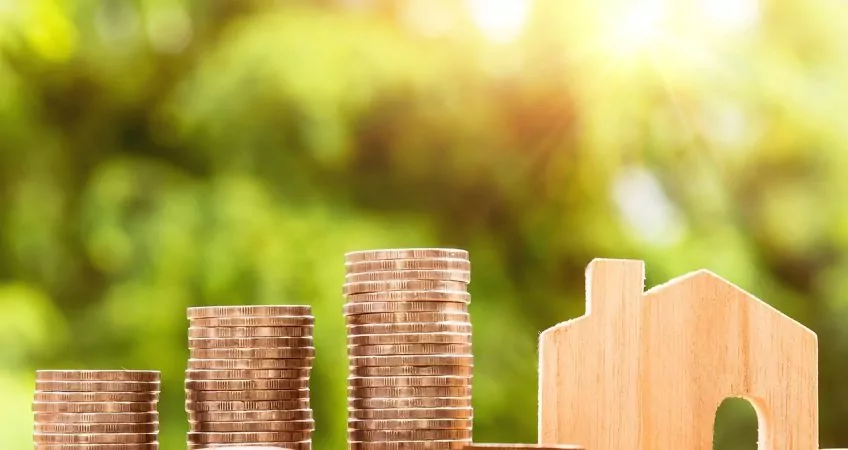
How I Took $5K And Created A Million Dollar Property Portfolio
How I Turned US$5,000 Into US$1.2 Million
In 1995, I made my first real estate investment, a three-flat building in Chicago.
I was able to make the purchase with US$5,000.
Two-and-a-half years later, in early 1998, I sold the building for a leveraged return of 1,800%.
I hadn’t planned to sell at that time. My first wife and I were divorcing, and I needed to sell so that she and I could split the proceeds.
After transaction costs, mortgage repayment, taxes, and the payout to my former wife, I walked away from the experience with a lump sum of US$50,000.
I was 29 years old.
What to do next?
I could have put my nut into the stock market, but even at that getting-started phase of my investment career, I found that option limited and risky. Real assets have always been more appealing to me than stocks and bonds.
Very shortly after I closed on the sale of the building, I met Kathleen Peddicord, the woman who would become, just a few months later, my second wife. She and I both had an interest in moving to Ireland, so we made the move together.
That event provided the answer to the question: What should I do with my US$50,000? I used it for the down payment on the house Kathleen and I bought in Waterford.
Now, two decades later and older, I wonder how things might have played out had I… all those years ago… put my US$50,000 into the stock market rather than an Irish country house.
So this morning I decided to try to answer that question.
What would US$50k invested in the U.S. stock market be worth today?
First, what would US$50,000 invested in the U.S. stock market be worth today?
If you’re a mathematician, please bear with me. What follows is definitely back-of-the-envelope figuring…
Using this basic calculator on the CNN website, I see that the S&P 500 Index has been up an average of 5.8% per year over the period in question.
Doing the math, I find that, if I had invested my US$50,000 in the U.S. stock market in 1998 and let it ride, then to today, I would now have about US$140,000.
Instead of putting my U.S. property profits into the U.S. equity market, however, I used them to make my first real estate purchase overseas. That US$50,000 made it possible for Kathleen and me to purchase the home in Ireland that we sold six years later for a leveraged return of nearly 1,000%.
After costs, mortgage repayment, and taxes, we walked away with about US$600,000. Fortunately, in this case, no divorce split was required.
With that US$600,000, we bought an apartment in Paris… and a farmhouse in Istria, Croatia, both of which we still own today.
Based on the current values of those two properties, if we were to sell today, that US$600,000 would be worth about US$1.2 million… allowing for transaction costs and the mortgage.
(As I admitted at the start of these calculations, this is very back-of-the-envelope ciphering. I’m sticking with U.S. dollars throughout, even though we’re talking about Irish punts for the Irish house purchase and euros for the apartment in Paris and the farmhouse in Istria. Fortunately, the euro-dollar exchange rate today is very nearly the same as it was at the time we made the Paris and Istria buys.)
OK… so my original US$5,000 turned into US$50,000… which turned into US$600,000… which today is worth US$1.2 million…
Whereas, if, 20 years ago, I’d put my US$50,000 into the S&P, it’d be worth US$140,000 today.
My overseas property investments in this case have earned me 9% a year on average when looking at total money in and total money out.
However, that 9% jumps to 18% per year on average when you look at the cash invested versus the net cash return (and after factoring in the equity generated from the mortgage payments).
The real annualized return falls somewhere in between.
But let’s just go with the 9%…
That’s a far better return on my money than I would have gotten from an index fund over these past two decades.
And I avoided the ups and downs of the stock market along the way. The worst down year of the period saw the S&P 500 lose 36%. With a loss like that you need a gain of more than 50% just to get back to even.
Real estate has down years, too, of course… and, yes, I’ve made bad buys. Buy me a rum and Coke the next time you see me, and I’ll tell you about my biggest losers.
Further, it can be possible to manage a stock portfolio to avoid the down years and take advantage of the up years… thereby beating the indices. But even the professionals aren’t able to do that consistently.
All that said, after 22 years of experience at this… having made now a total of 69 purchases in 24 countries… I’m more convinced than ever.
When I’ve got US$50,000 to invest… it’s going into real estate…
Lief Simon



